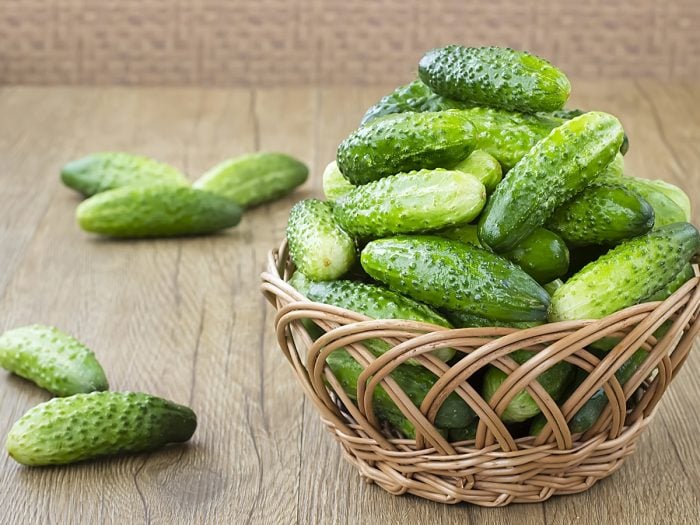When you hold a zucchini and cucumber in either hand, it can often be difficult to tell the difference. Despite this visual similarity, they are actually quite different. They have different flavors and consistencies, respond differently to cooking and contain different types of nutrients. As a result, their potential health benefits are also slightly different. Fortunately, both are packed with various nutrients and can be safely included in any diet!
Difference between Zucchini and Cucumber
The major differences between zucchini and cucumber include variations in taste, consistency, food group designation, physical characteristics, and nutrient content.
Taste
- In terms of taste, raw zucchini is slightly bitter, but it takes on a sweet flavor when it is cooked.
- Cucumber is refreshing and cool when eaten raw, partially due to its high water content. When you cook cucumber, the mild flavor all but disappears, and it becomes slightly soft.
Food Group
There is a great deal of debate about where these two foods belong in terms of food groups.
- There is a general consensus that both cucumbers and zucchinis are fruits, given that they both contain seeds and are developed from a flower. [1]
- However, zucchini is usually classified as a vegetable for nutritionists and dietitians, while cucumbers are flexibly referred to as both fruits and vegetables.

Cucumber helps to hydrate you. Photo Credit: Shutterstock
Physical Characteristics
- There are quite a few differences between zucchini and cucumber, beginning with their outer skin.
- Cucumbers tend to be cold and waxy to the touch, whereas zucchinis are more commonly rough and dull, lacking the sheen of a cucumber. [2]
- Furthermore, zucchinis are technically a form of summer squash and can grow up to a foot in length, or even longer.
- Cucumbers tend to have a limit to their growth, but when zucchinis are harvested early, the size difference between the two is negligible.
- Inside the zucchini, the flesh is basically white, but the soft flesh of a cucumber has a light green tinge.
- Cucumber seeds are also long and smooth, but zucchini seeds are short and wide.
- Finally, woody stems can often be found on zucchinis, whereas stems are not present on cucumbers.
Consistency
- In raw form, zucchinis have a much denser consistency, making it unpleasant to eat raw, in most cases. Zucchinis will begin to brown, sweeten, and get crispy. The flesh will also be significantly softened and easy to eat. [3]
- Cucumbers, on the other hand, have soft and meaty flesh that is both refreshing and easy to bite through. After being cooked, cucumbers soften and wilt, but still retain some crunch.
Nutrient Content
Cucumber and zucchini are both rich in certain key minerals and nutrients, but zucchini generally has higher concentrations.
- Zucchini has slightly more protein and fiber, as well as manganese, vitamin C, folate, and potassium. [4] [5]
- It also has slightly more calories (19 calories per cup of zucchini vs. 16 calories per cup of cucumber).
How Are Zucchini and Cucumber Cooked?
The primary difference in how these two vegetables are prepared is that zucchini is typically cooked, while cucumber is more often eaten raw.
- While cucumbers can be cooked, their already mild flavor is often lost, but they do tend to retain a crunch.
- Cucumbers are also popular in canning and pickling and are considered refreshing and deliciously cold when eaten raw. If you do want to eat cucumbers, they can be added to stir-frys
- Zucchinis, on the other hand, have a slightly bitter and starchy taste when eaten raw, so they are almost always cooked.They can easily get browned up or even crispy when fried. [6]
- You can make zucchini chips, or even use this vegetable as a replacement for pasta if you are trying to cut down on carbs.
When preparing or cooking either of these two vegetables, be sure to keep the skin on. Many of the most important nutrients are found in the skin, so don’t peel zucchini and cucumber before enjoying them!
